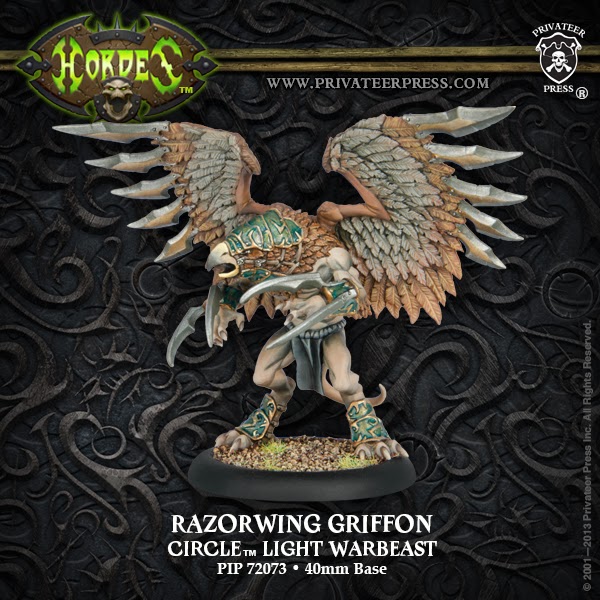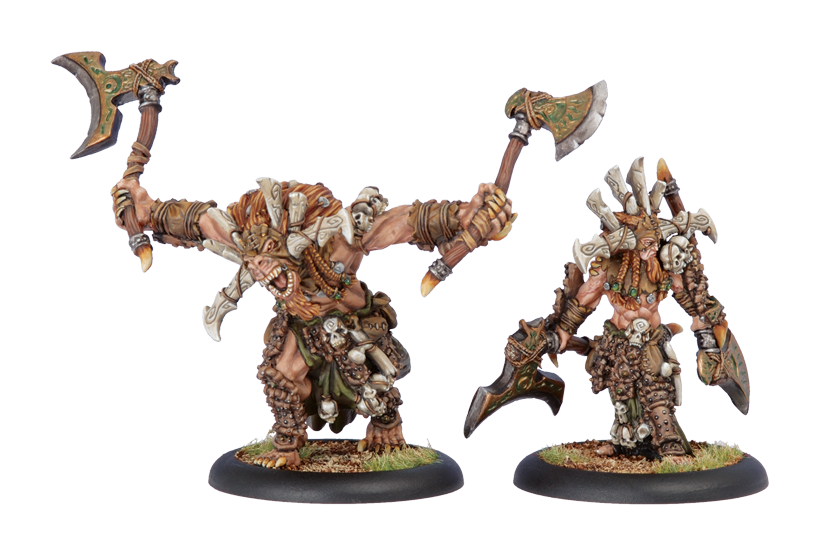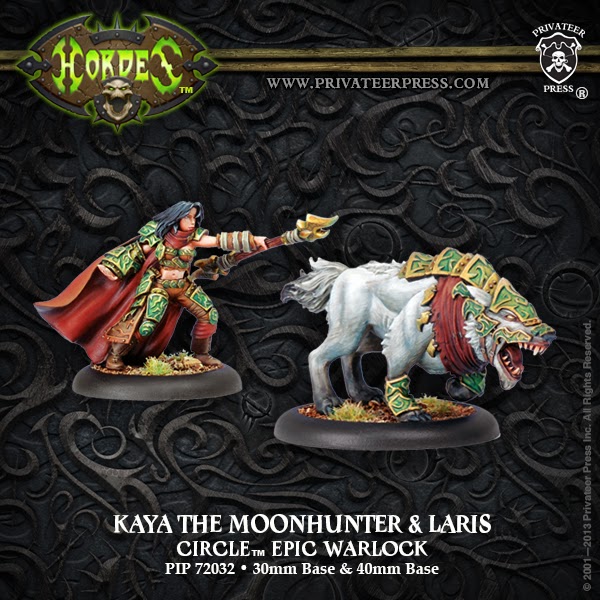Hordes – Razorwing Griffin 101

We’ve had the Razorwing Griffin in our midst for a few months now. Just how does it fit into Circle Orboros’s already excellent cadre of warbeasts?
Let’s start by simply discussing the Razorwing’s ability to deal out death and destruction. It has a trio of MAT 6, POW 12 melee attacks, the ability to make trample power attacks against any model regardless of base while ignoring all free strikes (not just those that might come from models it moved over) via the Blade Rush rule, and the Amuck animus for boosted attack rolls on special attacks, in this case most specifically used for trampling. The Threshing Blades rule also allows the Razorwing to add the POW value on its POW 4 Wing Blades to trample attacks for effective P+S 12 tramples. At SPD 6 with Flight, the Razorwing is a fairly-mobile melee warbeast that screams for buffs in this department. With its trio of melee attacks and ability to penetrate enemy lines, it can also make a solid assassination tool given the right situation and/or buffs.
Thinking just in terms of its mobility, which is arguably where a player would want to spend the most time when attempting to best take advantage of the Razorwing’s strengths, Circle Orboros has several options. Where warlock support is concerned, Kromac the Ravenous is a solid fit for the Razorwing, as he boasts both a means to reposition it via Warpath and an accuracy and efficiency boost with Wild Aggression, allowing the Razorwing to trample for free with boosted attack rolls. While the second part of Wild Aggression is arguably redundant with Amuck, it frees the Razorwing up for other important animi that might otherwise be of better use, like the Gorax’s Primal for a +2/+2 to attack and damage rolls, the Gnarlhorn’s Bounding for an additional 2″ of movement on the trample and +2 on attack rolls, or the Warpwolf Stalker’s Lightning Strike to allow the Razorwing to use Sprint so that it can move to safety after it makes its attacks.
Other minor synergies can be found throughout the faction with other warlocks. Krueger the Stormwrath’s Lightning Tendril’s effectively doubles the Razorwing’s potential model removal when making normal, non-trample melee attacks in addition to granting it Reach. Mohsar the Desertwalker can cast Mirage on the Razorwing for increased mobility and repositioning, and both he and Cassius the Oathkeeper have the Curse of Shadows rule to provide increased damage output. Grayle the Farstrider’s feat, Darkest Night, provides a turn of Stealth and defacto use of the Warpath spell on melee attacks. Finally, Morvahna the Dawnshadow provides rerolls to attack and damage rolls via Scales of Fate, which is arguably one of the best abilities in the game, while also potentially providing Carnivore for increased accuracy and warlock healing, Fog of War for concealment against ranged and magic attacks, and Purification for clearing the field of troublesome upkeeps.
At five points, the Razorwing Griffon isn’t an incredible investment, but isn’t in the super-cheap category of light warbeasts, so playing with it will take some care. Unlike its Scarsfell brethren, the Razorwing lacks innate Stealth. At ARM 15 with 22 hit boxes, it is very fragile for its investment. In lieu of defensive buffs like Shadow Pack, Occultation, Forced Evolution, Vortex clouds for denied line of sight, or Fog of War, it may often be best to use the Razorwing to break a jam of enemy infantry instead of as a first-strike piece where it might otherwise get shot to pieces before it has a chance to do its ugly work.
For an unboxing on the Razorwing Griffin, you can find some great pictures courtesy of GentleBen here.
So, how are your Razorwings fairing, Internet? Sound off!




